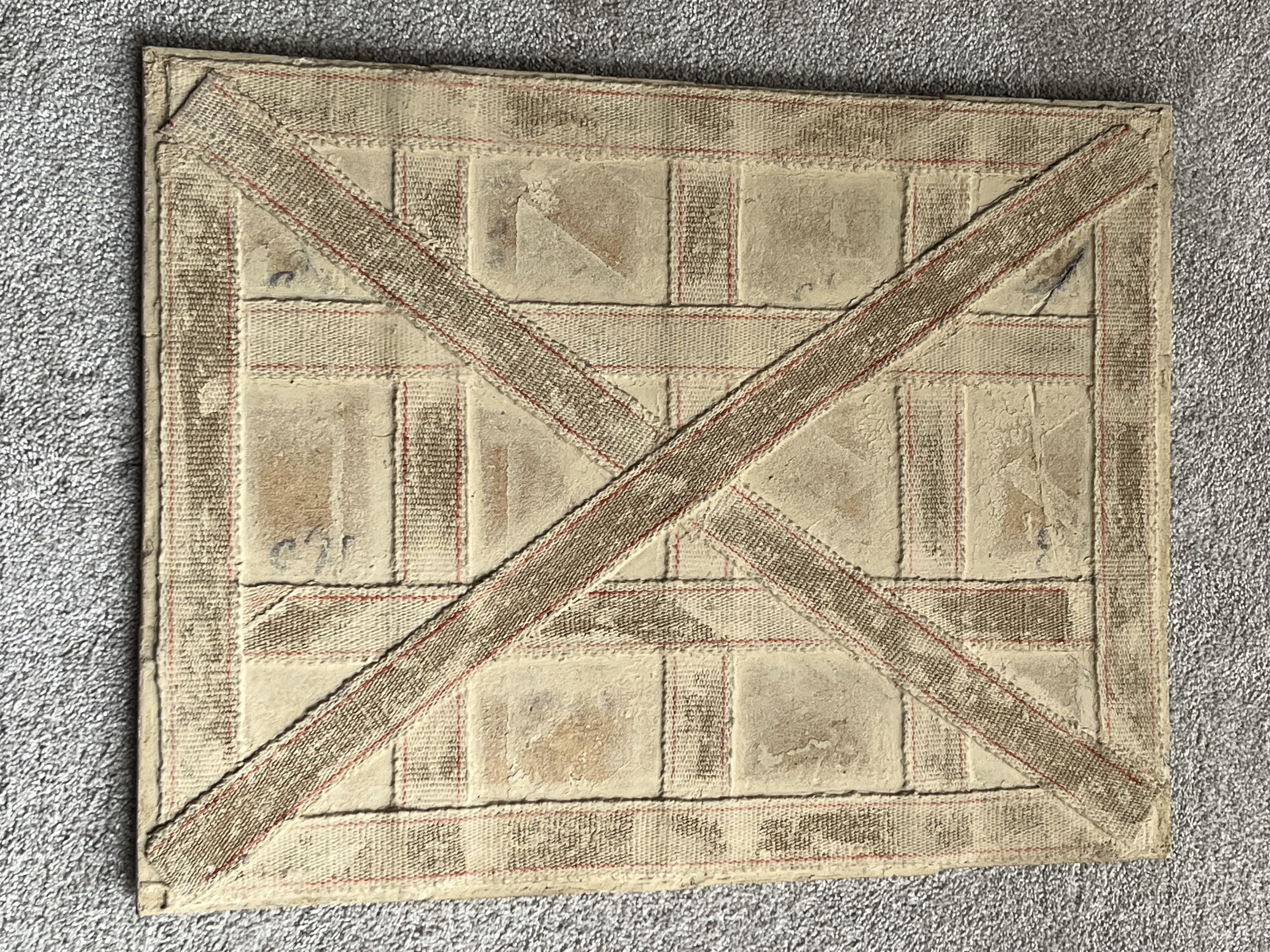Dear Rosew, what are the dimensions of the tiles. And is it possible to see the back of the tile panel?
Dear Johan, thank you for your reply. I took the tile panel out of the frame. Its dimensions are 60*45cm, and each tile is 15*15cm. The strip-like band on the back appears to be made of clay. Additionally, the street surface in the painting seems to resemble some letters, could it be the artist's signature?
Please allow me to add two more photos for your reference.
The scene is painted in the traditional technique with tin glaze on porous tiles, formed from plastic clay. The dimensions of these tiles were traditionally approximately 13 x 13 cm, from the end of the 19th century they were also made in dimensions of 6 inches (the standard size of industrially pressed tiles).
There is no signature or factory mark, but possibly a model number. I suppose first half of the 20th century in Harlingen, Makkum or Utrecht, the scene is unknown to me. Sometimes it is written below the scene: painted after ... [artist's name], that information is also missing here.
Dear Johan,
Thank you for your information!
Beoordeling:
Niet-Delfts
Toelichting:
Niet in Delft gemaakt
Delfts aardewerk wordt alleen zo genoemd als het echt in Delft is geproduceerd.
Lees meer
Handbeschilderd
Een belangrijk kenmerk van authentiek Delfts aardewerk is dat het handgeschilderd is. Druktechnieken komen op dit aardewerk niet voor.
Lees meer
Ongemerkt
Als een voorwerp geen merk heeft, betekent dit niet meteen dat het geen Delfts aardewerk is. Ongeveer 1/3 van al het Delfts aardewerk heeft maar een merk.
Lees meer
With thanks to Johan Kamermans for his detailed response.
Reactie toevoegen
Alleen ingelogde gebruikers kunnen reacties plaatsen Login of registreer om te reageren
Reacties 6
Dear Rosew, what are the dimensions of the tiles. And is it possible to see the back of the tile panel?
Dear Johan, thank you for your reply. I took the tile panel out of the frame. Its dimensions are 60*45cm, and each tile is 15*15cm. The strip-like band on the back appears to be made of clay. Additionally, the street surface in the painting seems to resemble some letters, could it be the artist's signature?
Additionally, the street surface in the painting seems to resemble some letters, could it be the artist's signature? 
Please allow me to add two more photos for your reference.
The scene is painted in the traditional technique with tin glaze on porous tiles, formed from plastic clay. The dimensions of these tiles were traditionally approximately 13 x 13 cm, from the end of the 19th century they were also made in dimensions of 6 inches (the standard size of industrially pressed tiles).
There is no signature or factory mark, but possibly a model number. I suppose first half of the 20th century in Harlingen, Makkum or Utrecht, the scene is unknown to me. Sometimes it is written below the scene: painted after ... [artist's name], that information is also missing here.
Dear Johan,
Thank you for your information!
Beoordeling:
Toelichting:
With thanks to Johan Kamermans for his detailed response.
Reactie toevoegen
Alleen ingelogde gebruikers kunnen reacties plaatsen
Login of registreer om te reageren